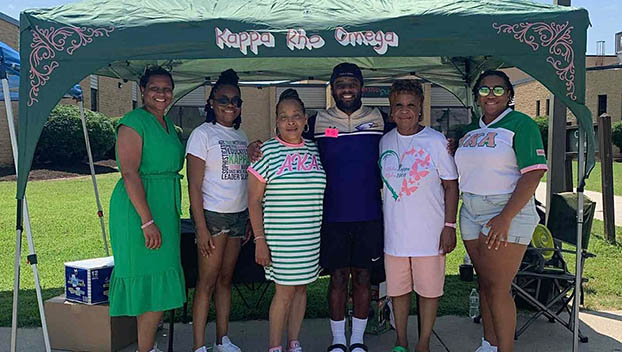County resident part of new surgical procedure
Published 8:00 am Friday, January 26, 2024

- Jennifer Evans and Kwadwo Baryeh M.D., discuss her recovery and health after undergoing a vaginal hysterectomy.
|
Getting your Trinity Audio player ready...
|
For about a year, Lunenburg resident Jennifer Evans was experiencing pressure and discomfort due to uterine fibroids, also known as benign tumors, on her uterus. The pain was becoming unbearable, with every option she tried not working.
“I tried over-the-counter pain relievers and yoga, but nothing helped ease the pain,” Evans said.
She set up an appointment to see Kwadwo Baryeh, M.D., at VCU Health Community Memorial Hospital, to find a solution. Baryeh joined VCU Health Women’s Health at South Hill last September and specializes in managing high-risk pregnancies and minimally invasive surgeries.
Trending
“(Evans’) tumors were probably not going to develop into a cancerous situation,” Baryeh said. “They hadn’t caused any damage, so the main issue was the pain they were causing her.”
Baryeh recommended Evans have a hysterectomy, which is the surgical removal of a woman’s uterus, to get rid of the tumors. Evans agreed to have the procedure. She said there wasn’t a worry about not being able to have any more children as she had already given birth to two daughters and looks after six grandkids.
LESS SCARRING AND QUICKER RECOVERY
Hysterectomies are common in the United States. According to the Centers for Disease Control and Prevention, 1 out of 3 women have had one by age 60. Along with the uterus and cervix, surgeons sometimes take out the ovaries and fallopian tubes as part of the procedure. A healthcare provider may recommend a hysterectomy if a patient is diagnosed with endometriosis, uterine prolapse, cancer in the uterus, ovaries or cervix, or fibroids, like Evans.
With laparoscopic – abdominal surgeries performed with the aid of a camera – and traditional hysterectomies, surgeons can see and reach areas of the body more easily. However these procedures differ in level of pain and recovery time for the patient.
To avoid more discomfort, Baryeh recommended that Evans receive a vaginal natural orifice transluminal endoscopic surgery. This procedure is different from a traditional or laparoscopic hysterectomy because no incisions are made in the lower abdomen. The cervix and uterus are removed through the existing vaginal canal.
Trending
While vaginal hysterectomies have been done at VCU Health before, this was the first hysterectomy completed by a surgeon in the health system – paving the way for patients dealing with uterine conditions to have more treatment options.
“A lot of gynecologists were trained in laparoscopic surgery, but now there seems to be a resurgence for going back to vaginal,” Baryeh said. “Not only is there less pain, but there’s no visible scarring. It is my go-to procedure for hysterectomies because the outcomes are so favorable.”
A QUICK RECOVERY
After staying overnight at CMH to make sure everything went smoothly, Evans was back to her daily routine. Within a week, she was able to walk without any tenderness.
“I was ready to do housework the next day,” Evans said. “Of course, I had the usual limitations of not lifting anything over 20 pounds, pulling or bending. I didn’t take any pain medication and felt no pain; just mild tenderness.”
That quick recovery is exactly why Baryeh recommends this procedure to his patients. Evans also noted how her care team took extra steps to ensure every question she had was answered and that she was prepared for surgery.
“Dr. Baryeh took the time to explain everything, drew pictures of what he was going to remove and listened to my concerns,” she said. “The nurses and anesthetists were caring, understanding and made sure I wasn’t in any pain. I’m so thankful for my care team. They were friendly and took care of anything I needed. They were everything (care teams) should be.”




